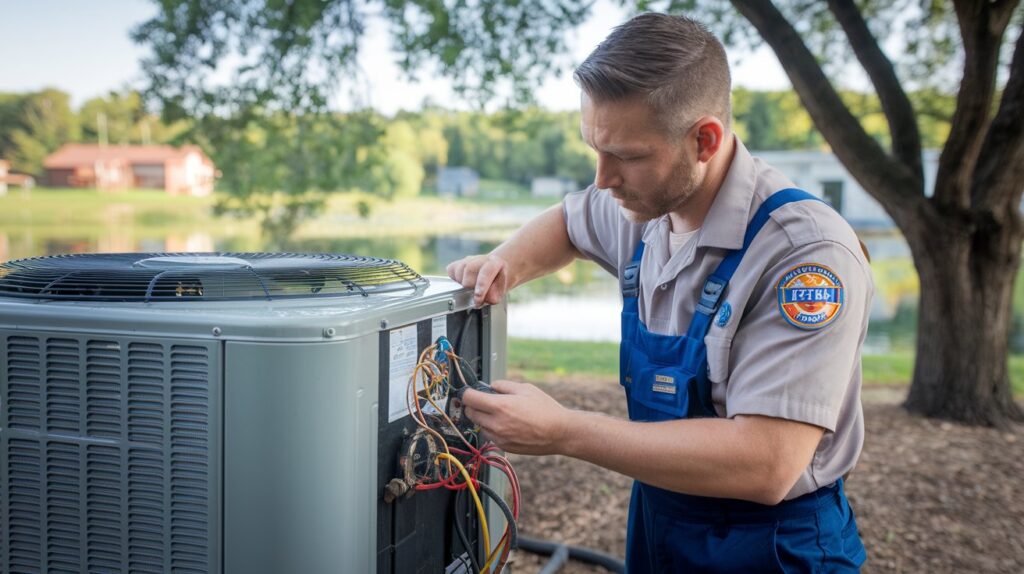Air conditioning systems play a vital role in maintaining indoor comfort during warmer seasons. When they start to underperform, prompt attention helps prevent further complications. An experienced technician follows a structured approach to identify the root cause of any cooling problem.
An air conditioning repair company typically begins with a series of preliminary checks. These include reviewing unit performance, examining internal components, and comparing temperature differentials. A clear process helps ensure that each issue is addressed efficiently, minimizing disruption to daily routines.
Initial Observations and System Behavior
Apart from using specialized tools, specialists often rely on what the system communicates through its operation. Sounds, airflow patterns, and thermostat behavior offer valuable insights. Low airflow from vents or inconsistent cycling can indicate blockages, faulty sensors, or irregularities in the ductwork. Listening for rattling, hissing, or grinding sounds often points to motor issues, refrigerant leaks, or loose parts. Also, measuring both ambient indoor and outdoor temperatures provides early indications of unit responsiveness.
Evaluating Electrical Components and Controls
Air conditioning units rely on a network of electrical parts to operate smoothly. When the system fails to start or shuts down unexpectedly, checking the electrical panel is often the next step. Technicians test fuses, breakers, and contactors for wear or corrosion. Capacitors and relays are also examined, as these components help start the compressor and fan motors. Modern systems often include circuit boards and digital displays that also require inspection.
Refrigerant Pressure and Coil Conditions
Improper refrigerant levels are a common cause of reduced cooling performance, often leading to constant operation without effectively lowering the temperature. Technicians use pressure gauges to check whether the system has too much or too little refrigerant, both of which affect efficiency. Coils inside and outside the unit are inspected for dirt, corrosion, or ice, as buildup on these surfaces hinders heat transfer. Cleaning or replacing clogged evaporator or condenser coils helps restore airflow and improve overall system function.
Air Filters, Vents, and Ductwork Checks
Maintaining steady airflow is essential for consistent cooling. Technicians focus on several components that influence how air moves through the system.
- Filters are inspected and replaced to ensure clear air passage.
- Registers and vents are checked to confirm there are no blockages.
- Ductwork is examined for leaks, bends, or disconnections, especially in older systems.
- Sealing or repairing ducts helps prevent air loss and restores balanced distribution.
Professional Services That Support Reliable Cooling
Air conditioning technicians follow a methodical approach that addresses both immediate concerns and long-term system performance. Their work involves a combination of diagnostics, system care, and long-term planning to maintain steady performance. Routine service enables the early detection of minor issues that may impact future system operation, while tailored adjustments optimize efficiency across various types of cooling systems. Key tasks in sensor and thermostat evaluations include:
- Inspecting temperature sensor placement and verifying accurate readings
- Identifying and correcting sensor misalignment or malfunction
- Testing thermostats to confirm they reflect actual room conditions
- Recalibrating or replacing older thermostats to maintain consistent cooling
Air handlers and drainage components are also reviewed during service visits. Blowers, belts, and fan blades are inspected by professionals for signs of wear that could limit airflow or strain the motor. If necessary, technicians make mechanical adjustments to ensure the system operates smoothly. Drain pans and lines are cleared of buildup to prevent leaks and moisture-related damage. Together, these steps help maintain airflow, prevent blockages, and reduce the risk of future malfunctions.
Accurate diagnosis of cooling problems relies on a structured approach backed by technical expertise. An air conditioning repair company performs detailed inspections of sensors, refrigerant levels, electrical parts, and airflow systems to identify specific issues. Each component is carefully evaluated to ensure the system operates smoothly and efficiently.

